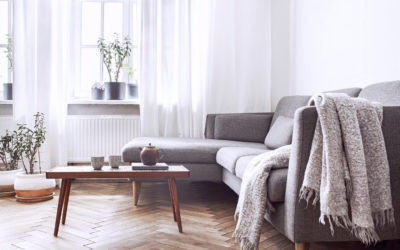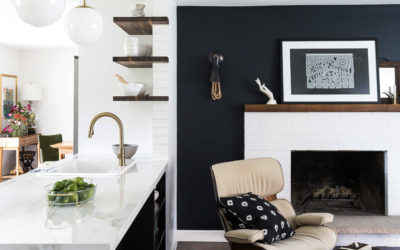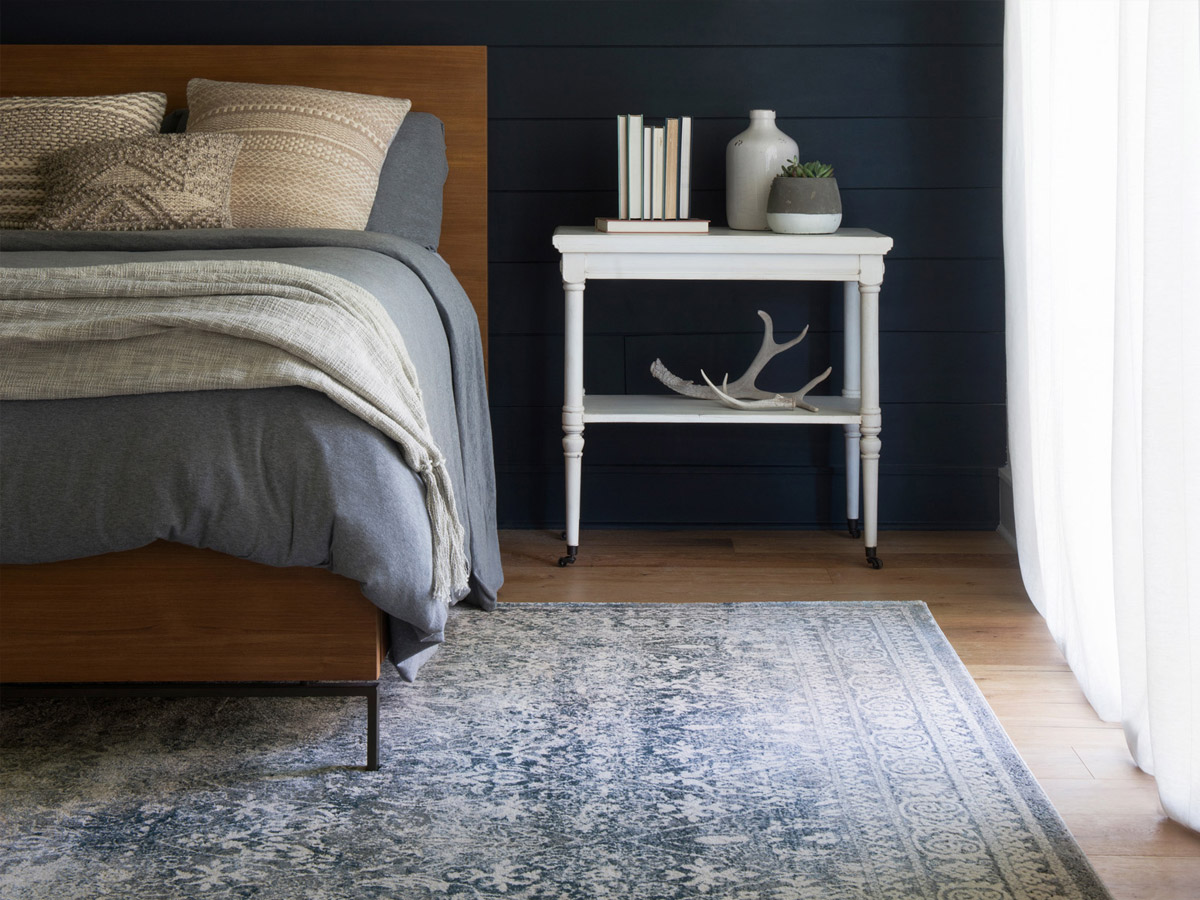
Area Rug Tips in Home Design
When designing a space, area rugs are an essential element to consider. Interior designers most often start their plan by choosing a rug first and building the room around it because rugs are the anchor of a room. They ground the space as well as the furniture, and they’re also the largest element in the room. Therefore your area rug must support the overall design of the room and also your lifestyle, so it creates a pleasant and desirable space you want to be in. Below are three tips for choosing the right area rug for your home design.
1. Size and Shape Matter
One of the biggest mistakes most people make when placing an area rug into a room is size, mostly using a rug that’s too small. This is called a floating island rug. Basically, the rug is large enough for the coffee table and perhaps part of the couch, but it leaves all the other furniture sitting around the rug like a campfire. This is a no-no. If the rug is too small, it doesn’t anchor the room, in fact, it makes the room feel unstable. It can also make the room feel smaller.
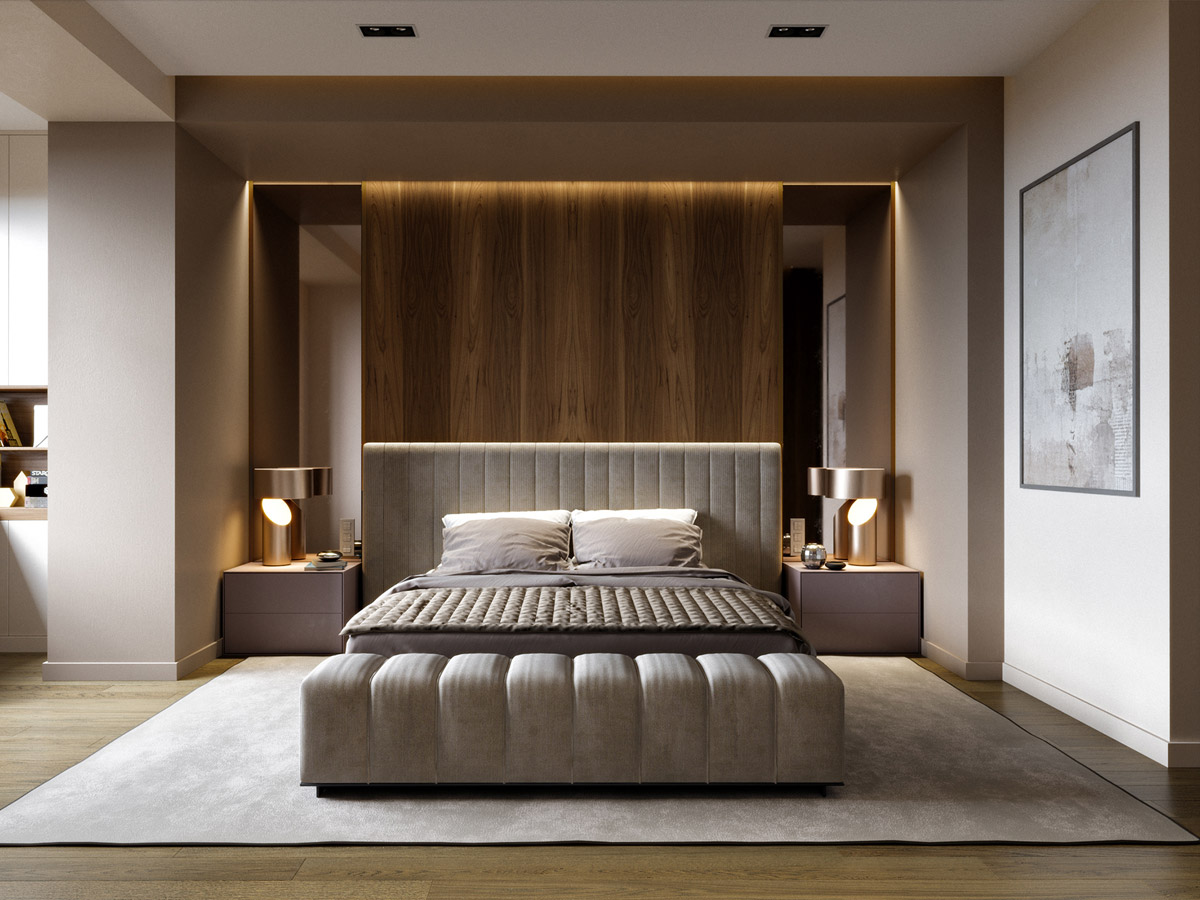
This area rug size and placement allows lots of walking space around the bed. Its similar color to the bedding and headboard gives the illusion of a larger space. © Maxim Shpinkov
When choosing an area rug size, consider the functionality of the space. For a living room, you want a rug that will fill most of the space, good for creating a soft surface for lounging or playing games. The general rule is your rug should have a two-foot clearance from the wall. This allows space for furniture to sit. For dining rooms, your rug should extend at least two-feet past your dining room table. This allows enough rug surface below the chairs, so they aren’t half on the rug and half on the floor, causing unbalance. For hallways, there should be at least a five-inch border of flooring around the rug. For bedrooms, the rug should extend at least two-feet past all edges of the bed, so when you get in and out, your feet are always on the carpet.
Regarding shape, generally, area rugs should echo the shape of the room. So a rectangular room should have a rectangular rug. However, a square room can handle a square or circular rug. With circular rugs, the edges, most of the time, feel more exposed, so it must be large enough to contain all the furniture. They work well with circular dining room and coffee tables because they ground the space with the same shape.
2. Space Definition
Area rugs play a large role in defining spaces. As mentioned, they help anchor a room and help define its purpose. In open floor plans, they play a key role in defining the different living spaces since there are no walls to separate them. Area rugs can also be used to carve out two spaces in one, or zones, for example, a playroom area within a living room. By using two rugs, it creates visual zones to help define the purpose of each area. Even hallway rugs help define their purpose by becoming a visual pathway, supporting their function of connection. So when choosing area rugs for your home, consider how each space will be used so the rug will enhance its functionality.
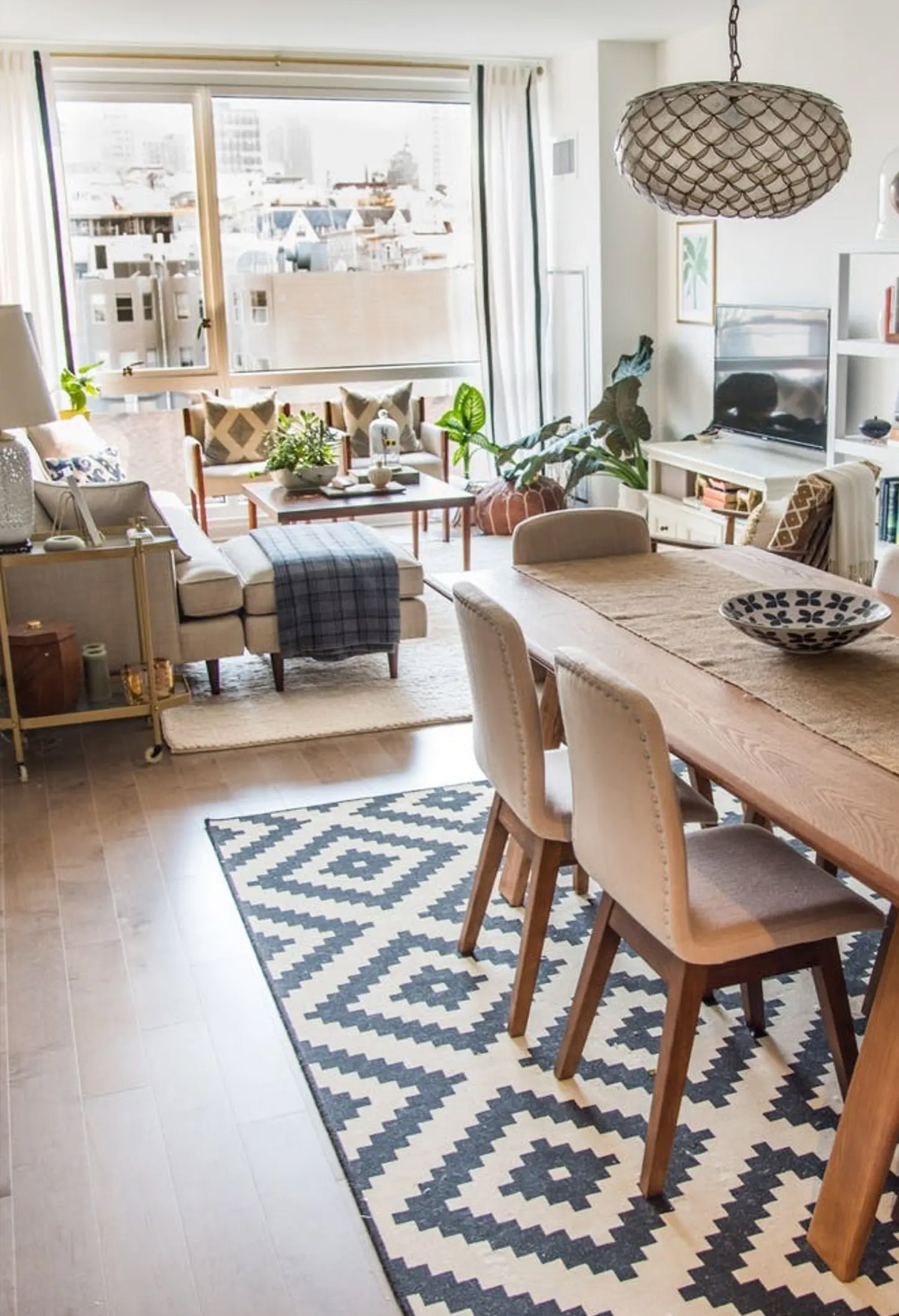
Two rugs are used in this space to define the living room and dining room. © Apartment Therapy
3. Color, Texture and Pattern
So once you know the size and purpose of your area rug, it’s time to have fun with its design, and that means color and texture. For both, you have two choices; your rug can blend in or stand out. That is determined by your personal decor style. For those that lean towards a minimal design, a rug that blends in would work. For those that lean towards dramatic and loud design, a brightly patterned run adds pop. For either style, your existing wall color should be considered, or choose a new color that compliments your rug.
As mentioned, an area rug can either blend in with the room’s decor or, it can be a showstopper. If you prefer your rug blends in, choose a color that is relatively close to your wall color with minimum pattern. That way the floor will visually become another “wall” that remains as a backdrop to your decor. The rug should have little to no pattern, but it can have texture in its weave.
For a showstopper area rug, go bold on color and pattern. Look at it as a piece of art; it should be properly featured and supported, and it should be the loudest design element your eye sees when entering the space, so keep your decor to a minimum. When choosing a rug design, consider the story it tells about your personality. For example, a vintage-looking oriental rug says you love and appreciate history or classic design. A brightly colored striped rug can suggest you’re adventurous and open to new things. And a simple, understated rug may reflect a sense of calm and relaxation. Of course, the rug design needs to work with your decor style, whether that’s midcentury modern or rustic farmhouse. As with art, different rug designs speak to different people. Choose one that not only fits your decor style but fits your personality too.
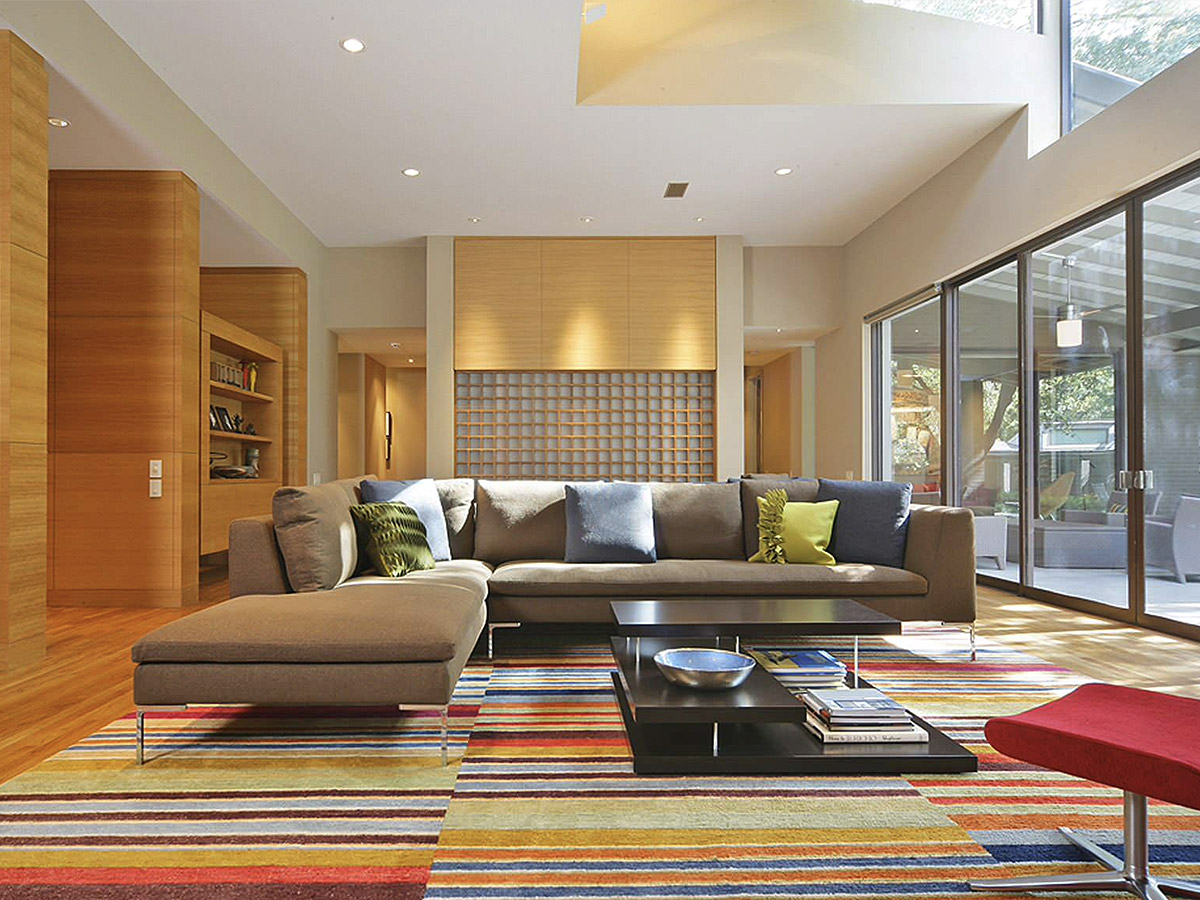
This bold rug anchors the space nicely and gets your attention with its many colors and striped pattern. Notice the room’s decor is monotone so the rug can take center stage. © Houzz
Your home reflects how you feel on the inside. When you design a space that truly captures who you are, it will feel timeless. Don’t follow trends or what your friends do. Consider what makes you happy, what inspires you, and what comforts you when designing your home, because its where you spend most of your time. Hopefully these area rug tips can be a guide to designing and creating a beautiful space you love coming home to.
RELATED READS
Designing with Indoor Plants
Monstera aka “Swiss Cheese Plant” © FeelPicAt one point in my life, I had over 30 indoor plants. But then my husband and I started havings kids, and I gave some away. Then we moved across the country, and I had to part with many, taking only about five with me. That...
Five Tips for Designing Small Spaces
Don’t let IKEA have all the fun—you too can design a small space spectacularly! If you asked 10 interior designers how to design for small spaces you’d probably get a lot of different ideas because each space has its own story to tell. What works in one room may not...
Clever Accent Walls
© BRIO Interior DesignThe idea of an accent wall may sound like an exciting way to add pop to a room, and it’s certainly easier than painting all of the walls but don’t break open that can of paint just yet. Your room needs to meet certain criteria in order to...

